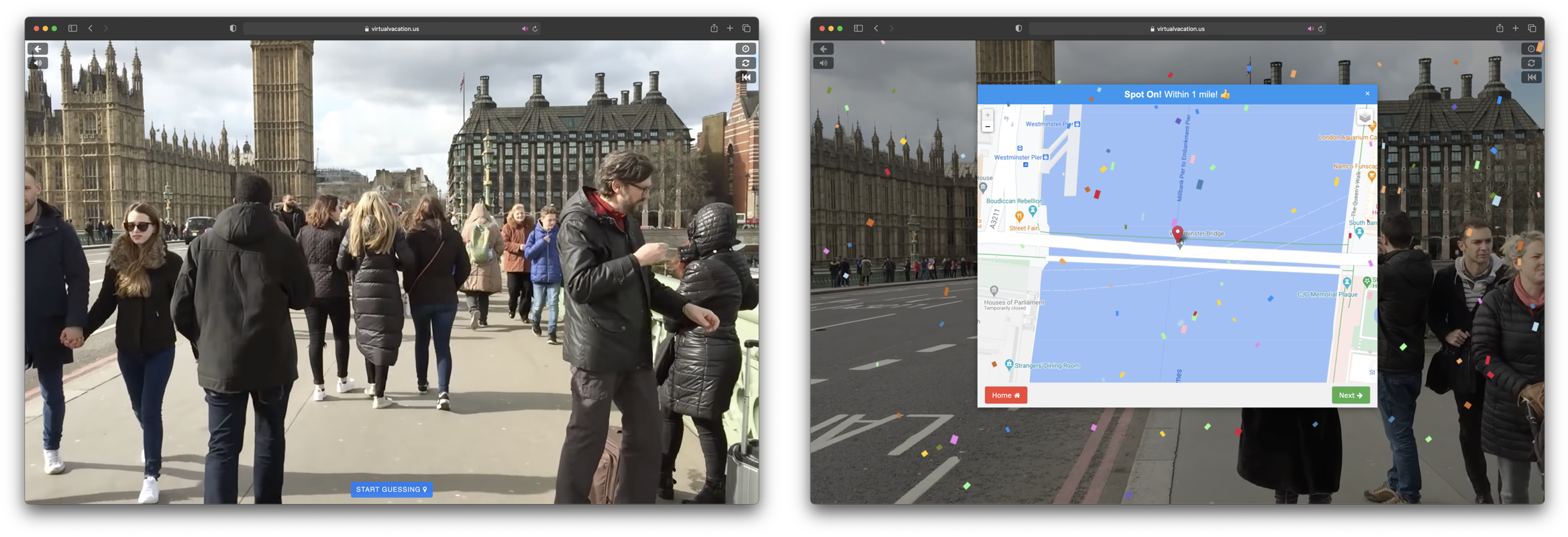The pandemic has been with most of us for around a year now, and with the number of cases going back down, and the rapid vaccine rollout, there actually seems to be some light at the end of the tunnel.
Some say COVID-19 will be with us for a long time, others say forever. I suspect that it will live on as a seasonal virus, similar to the flu, and other types of coronavirus. However, I’m not an expert, so I’ll leave the thinking on that one to them.
Instead, what I have been thinking about is mainly what is life going to be like after the pandemic. Once the various lockdowns are ended, and we’re set free again. Free to go “back to normal”.
Except, I don’t expect anyone truly expects we will go back to life as it was before the pandemic. Instead, I think instead of going back to normal, we will be going forward. Forward to a life where we apply the lessons that we have all learned over the last year.
The Lockdowns
I can only speak from my own perspective, and with the context of the UK’s experience of the virus and various lockdown measures, but I think I can say one thing for everyone - It’s been one hell of a rollercoaster ride. We’ve had different levels of restrictions here in the UK, some stricter or more localised than others. They all felt different.
When we first had a lockdown, the entire nation seemed to get together and had a real sense of community spirit to try and pull through the lockdown. It was a novel thing, being locked inside our houses. And if you weren’t someone that was immediately affected by losing your job, your business not being able to operate, or worrying about family members who were more vulnerable to get the virus, there was a sense of “fun”.
I don’t mean to say that not everyone took it seriously, or that they didn’t care about the health of others. But there was a little sprinkle of excitement on everything. Everything was different, so we were all experiences new things at the same time. Whether it was working remotely, gathering online with friends and family, spending more time with our family members, and just generally exploring our new world.
After the lockdown ended, and the first wave was over, it was just about summertime. “Non-essential” shops were reopening, we were told to go out and eat at restaurants, and everyone was making use of their free time and exploring nature. A few people had holidays, but at least the people I know, kept within the UK. It wasn’t normal, but it was a sense of freedom.
Then later in the year, around October, we started to get new restrictions seemingly every week. Some were applied nationally, others based on tiered systems. Because the restrictions weren’t always as strict as the first time around, there was a more relaxed feel. And to be honest, I would say that around this time, not everyone was paying attention to the rules.
While there was a short national lockdown in the latter stages of the year, there was Christmas to look forward to. So it wasn’t all negative. Until, of course, the rules were tightened just before Christmas.
Then in January, it was announced that we would be entering a third national lockdown. This time until February. This was obviously driven by more strains of the virus, the expected seasonal increase, and also a few people that did mix over the Christmas period. In relative terms to the first lockdown, it’s not that long at all. But I think this time around, it’s hit people the hardest.
But now we have the new vaccines being rolled out, and the UK seems to be doing a pretty good job at it. At the same time, talks are beginning to happen regarding easing the lockdown measures. It’s starting to feel slightly positive again. We’re beginning to think about life after lockdown. Not life returning to normal, but instead taking everything we’ve learned over the many highs and lows, and looking at our lives with a fresh perspective.
What Happens Next?
I think the big thing that we’re all contemplating now, are our priorities. Maybe we valued work too highly, we didn’t see our friends and family often, we didn’t make full use of our opportunities, or maybe we just got too comfortable and forgot what was important.
Work
The biggest change will no doubt be related to how we work after the pandemic. Some have people have continued like normal, some like myself have been lucky enough to be able to continue working from home, but others might not have been able to. And since for some it’s not guaranteed that work will be the same after the pandemic, there’s obviously going to be some major shifts.
For the people that have continued working like usual, they might now be asking if that job is still right for them. Maybe during this period, they’ve learned that it’s not for them?
And even if while working from home, your job is essentially the same, it might have unearthed some thoughts about how you want to work in the future. Is remote work something you like? Are the benefits of your job still worth it? Do you really want to go back to commuting for hours a day? Or after this experience, are you simply ready for something else?
As for everyone that hasn’t been so lucky, where they’ve either lost their jobs or just not been able to work, I think there will be a big chunk of them that have used this period to analyse where they want to go in the future. Because if you’re someone that has been on the edge of a career switch, this may have been the unfortunate but possible helpful nudge in a better direction.
I’ve certainly seen a lot of small businesses starting recently. Mainly from young people who aren’t working, and want to fill their time, and also see if they can make some money. I can’t say they’re innovative businesses, most of them are either small-scale handcrafted goods, personalised hampers, or just plainly reselling goods in various selections with a branded logo. At least from what I’ve seen, I don’t imagine most of them will last that long, but I bet some of them will.
And if you have been building a small business recently, or have had a “side hustle” going for a while, this might be the time to really try to make it a main source of income?
Work-Life Balance
Even if you don’t want to switch to a new career path, or make changes to the way you work. The balance between work and personal life will certainly have been tested for a lot of people. I think a lot of people will have realised that seeing their family is important, and simply enjoying life can be more important than working as much as possible.
Because what is the point of work if you’re not able to enjoy your life? In my mind, work is meant to enable your life, not become your life. Some people are happy with their life becoming their work, but I personally don't get it.
Travel
Similar to the work-life balance question. Now we’ve all had a period of not being able to travel, as soon as we all can get back to travelling around the world, I think a lot of people will be doing so. Like most things, there will be an initial surge, but after a year of little to no travelling for most people, I bet a lot of people are just itching to get on a plane.
Community
Although I think it hasn’t been as strong recently, over the whole pandemic, there has been a bigger sense of community spirit. Whether it’s by following the new restrictions, supporting friends, choosing smaller local businesses, it does feel like smaller communities are pulling together.
I think this is great. Because I think when we think of ourselves as simply being part of the UK, it’s hard to feel as connected to one another because the scale is just too high to comprehend. (It’s also why I think large social networks have issues, but that’s for another day)
But by being part of your local community, you can feel like you’re actually part of something. And it’s a lot easier to make a difference. For example, buying from local bookstores instead of Amazon, going to local events, and maybe even providing something back to the community yourself?
Myself
As for myself, I’ve been lucky enough to still be able to work remotely. It’s not totally new to me, since I used to work at home every now and then anyway. But those experiences always feel like one-offs. The company wasn’t ready for full-time remote work, everything was about being present in meetings, gathering near a whiteboard, or physically pairing with someone. So when the company decided to make everyone work from home (which was weeks before the UK actually went into lockdown), it was a big change for a lot of people.
Admittedly, as a developer, I can do the essential parts of my job with just a laptop and an internet connection. But there were some early teething problems with meetings, working closely with people, and also some technical issues due to our internal network and having all of our servers accessible over the VPN. Most of that was resolved in the first month or so though.
Since then, I think that while I wouldn’t say we’ve gone full-time remote working since there is still the mindset of going back to the office eventually, I would say that we are working very efficiently. And when I talk to other colleagues about this, we really struggle to come up with major reasons why we need to go back. I assume some executives in the company will be thinking similar things too since we rent multiple floors in an expensive building in central London, there are the added costs for facilities management and all of the little extras, and also I think a lot of us are simply more happy being at home.
There are a few things that I like about being in an office environment, I like physically being able to turn around and talk to the rest of my team, I like physically being in meetings, and I really enjoy being in London every day. But I don’t think those benefits outweigh the money or time spent on my commute. On average it takes me 1:30 to get to/from work. So if I want to be back home by a relatively normal time, I need to leave my house at 6:30 to start work at 7:30, I’d finish at 16:30, and be back home at 18:00. 12 hours of my day for 8 hours of work. I’m just not sure it’s worth it anymore.
As for my personal life, there are some things that I want to start changing. I haven’t exactly been seeing my family that much, I don’t have a history of supporting small/local businesses, I’ve not taken any interest in my local community/town, and I think I’ve generally placed work above everything else.
But since work has been taking up a significantly less amount of my time, I’ve been seeing what it’s like to be able to actually do things every day. Because if work takes up 12 hours of your day, and you sleep for 8, then that only leaves 4 hours every day. So in a sense, this lockdown has actually been less restrictive for me. I’ve gained more time in my day, and I’ve been slowly getting used to it.
I’ve not quite come up with the answers yet, but here are the questions I’ve been asking myself recently:
- Do I really want to travel to a city every day?
- Is being in the office worth the time and money spent on the commute?
- What local businesses can I support by using them instead of big corporations like Amazon?
- If I am to work remotely permanently, what other changes am I able to make to my life?
- Should I try to work for a more remote company?
I’m interested to see how the pandemic has affected other peoples lives, and if you also feel like there are some changes you want to make when “normality” comes back around.
Photo: (Miguel Sousa / Unsplash)








